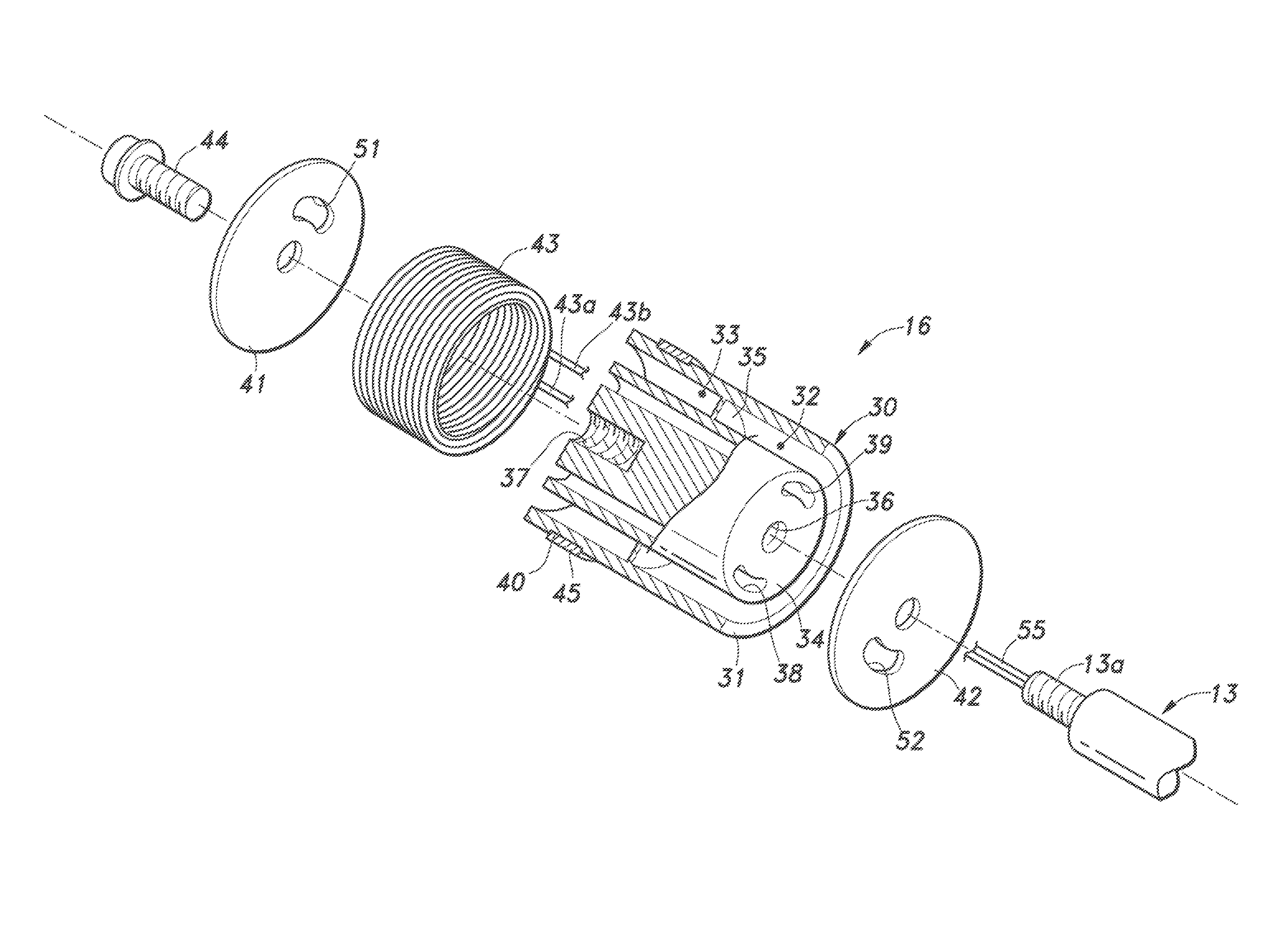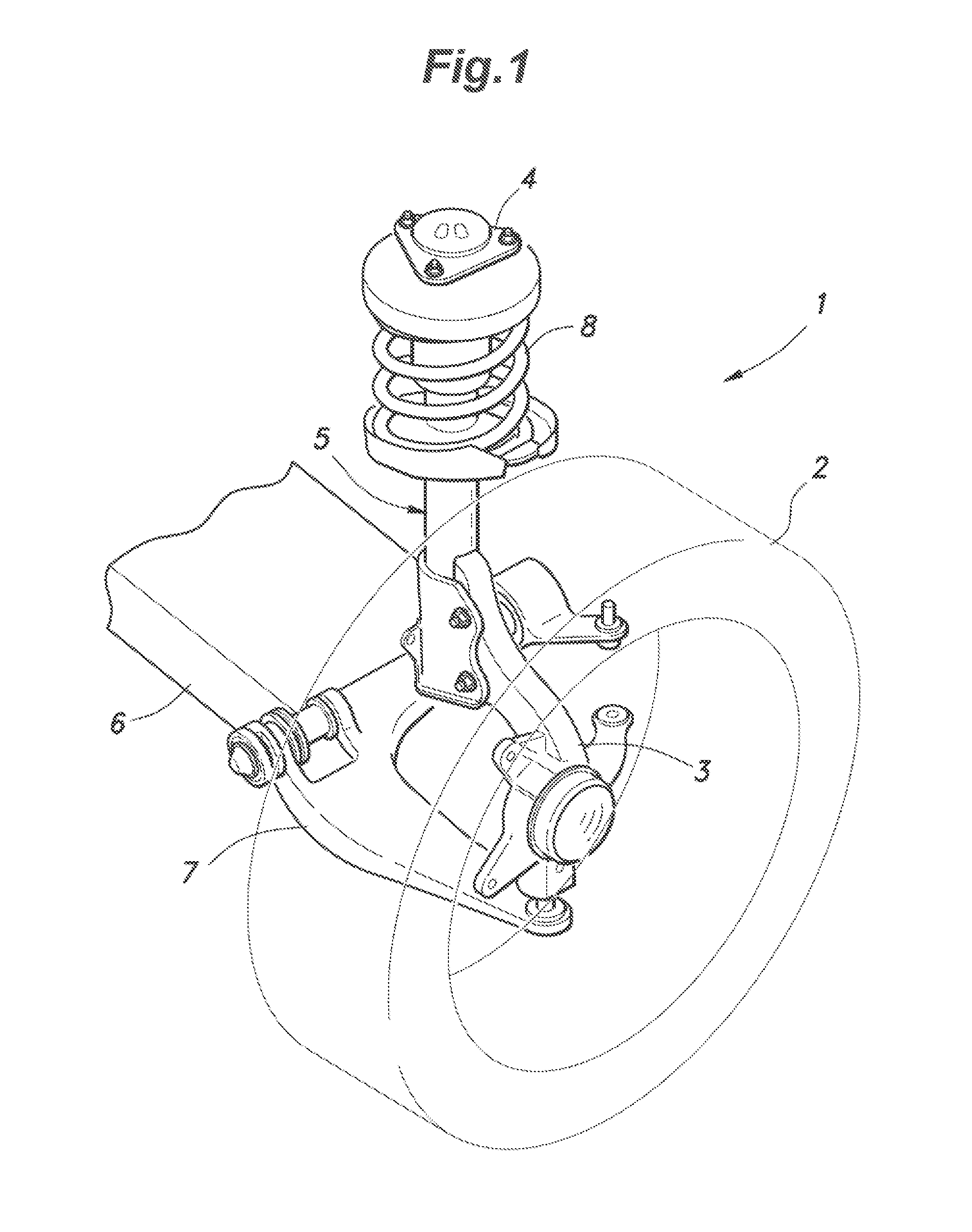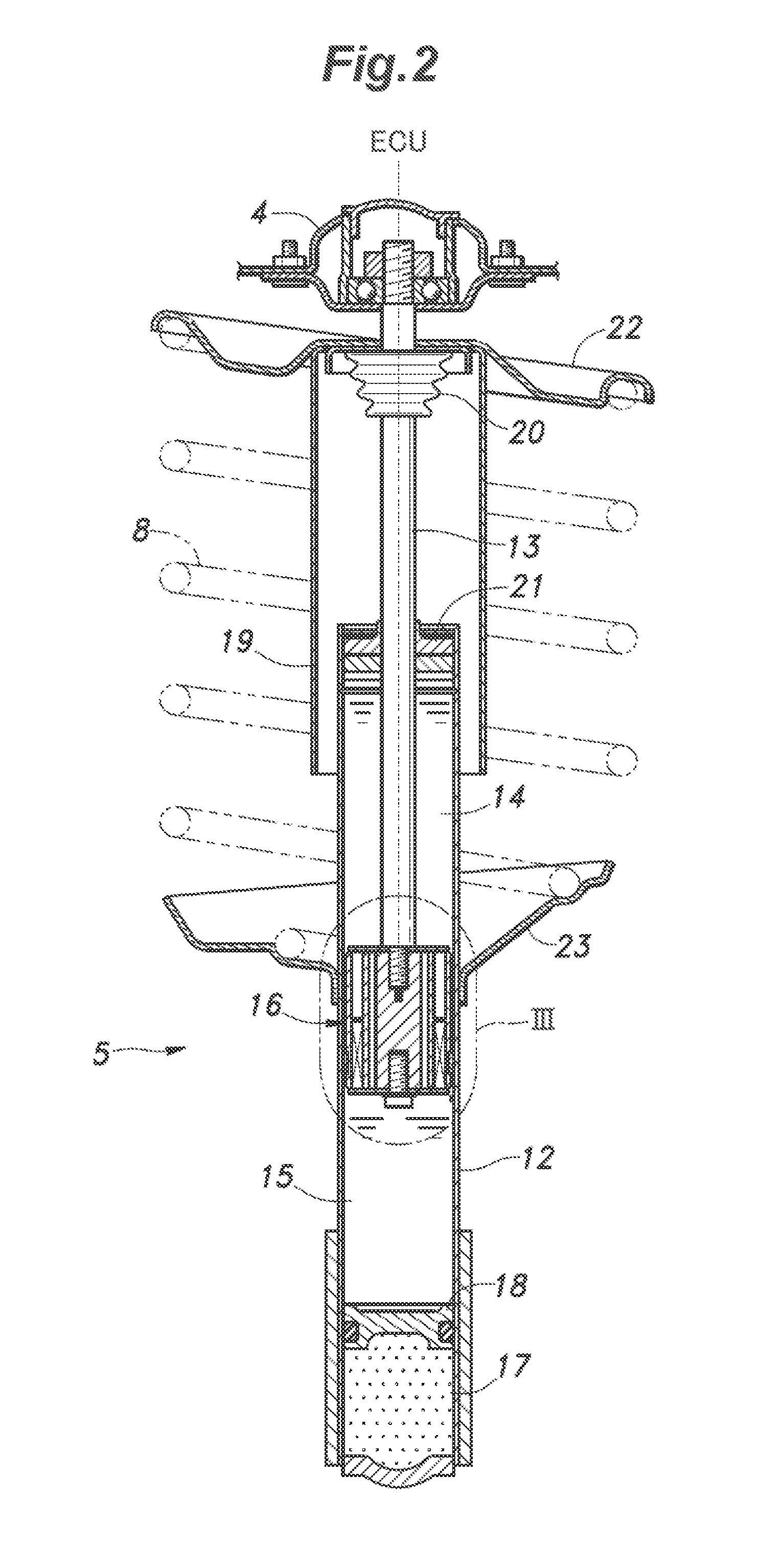Variable damping force damper
a damper and variable technology, applied in the direction of shock absorbers, mechanical equipment, transportation and packaging, etc., can solve the problems of reducing the mechanical strength of the piston main body, affecting the smoothness of the telescopic, so as to reduce the number of assembly steps, prevent the deformation of the electric coil, and reduce the number of components
Active Publication Date: 2016-05-03
HONDA MOTOR CO LTD
View PDF13 Cites 3 Cited by
- Summary
- Abstract
- Description
- Claims
- Application Information
AI Technical Summary
Benefits of technology
The present invention relates to a damper structure for a front suspension of an automobile. The technical effects of the invention include preventing deformation of the piston easily, reducing wear of the seal, and preventing wire break or other electromagnetic coil issues. The invention also includes a connection member made of a ferromagnetic material that can restrain the damping forces on the expansion and contraction sides, and a connection member made of a non-magnetic material that can increase the effectiveness of the magnetic force. Additionally, the invention includes a structure that allows for variable damping forces on the expansion and contraction sides, and a structure that reduces bending, rotation, and twisting of the piston.
Problems solved by technology
In the variable damping force dampers disclosed in Patent Documents 1 and 2, since the electromagnetic coil is disposed between the inner yoke and the outer yoke, the mechanical strength of the piston main body is reduced, and this may cause the following problems.
This may cause deformation of the electromagnetic coil, such that the axis of the outer yoke is offset from the axis of the inner yoke, resulting in a slight misalignment between the axis of the cylinder and the axis of the piston main body.
This may hinder a smooth telescopic action of the damper and cause a seal, which is provided in a cylinder end portion such that the piston rod is in slidable contact therewith, to be worn out in a relatively short period of time.
Method used
the structure of the environmentally friendly knitted fabric provided by the present invention; figure 2 Flow chart of the yarn wrapping machine for environmentally friendly knitted fabrics and storage devices; image 3 Is the parameter map of the yarn covering machine
View moreImage
Smart Image Click on the blue labels to locate them in the text.
Smart ImageViewing Examples
Examples
Experimental program
Comparison scheme
Effect test
first modified embodiment
[0038]FIG. 6 is an enlarged fragmentary cross-sectional view showing a first modified embodiment;
second modified embodiment
[0039]FIG. 7 is an enlarged fragmentary cross-sectional view showing a second modified embodiment;
third modified embodiment
[0040]FIG. 8 is an enlarged fragmentary cross-sectional view showing a third modified embodiment;
the structure of the environmentally friendly knitted fabric provided by the present invention; figure 2 Flow chart of the yarn wrapping machine for environmentally friendly knitted fabrics and storage devices; image 3 Is the parameter map of the yarn covering machine
Login to View More PUM
 Login to View More
Login to View More Abstract
Provided is a solenoid-type variable damping force damper that improves the strength of the piston and prevents wire break in the electromagnetic coil. A piston includes a piston main body, an expansion-side valve plate, a contraction-side valve plate, an electromagnetic coil, and a bolt. The piston main body is an integrally formed component made of a ferromagnetic material, and includes a hollow cylindrical outer yoke that is in slidable contact with an inner peripheral surface of a cylinder, a columnar inner yoke having an outer peripheral surface opposing an inner peripheral surface of the outer yoke via first and second gaps, and a connection member connecting the outer yoke and the inner yoke with each other at an axially middle position of the piston and separating the first and second gaps from each other. The electromagnetic coil is fitted in the second gap of the piston main body.
Description
TECHNICAL FIELD[0001]The present invention relates to a solenoid-type variable damping force damper for use in a suspension of an automobile, and particularly relates to technology for improving the strength of a piston and preventing wire break in an electromagnetic coil.BACKGROUND OF THE INVENTION[0002]A suspension is an important element that significantly affects the driving stability of an automobile, and typically includes, as main components thereof, a link (such as an arm, rod, etc.) that supports a wheel to be movable vertically relative to a vehicle body, a spring that is flexible to absorb impact from a road surface or the like, and a damper for damping the oscillation of the spring. Such a damper for an automotive suspension is typically embodied as a tubular damper which includes a hollow cylinder filled with hydraulic oil, a piston configured to slide in the cylinder in an axial direction, and a piston rod having an end connected with the piston, where the hydraulic oi...
Claims
the structure of the environmentally friendly knitted fabric provided by the present invention; figure 2 Flow chart of the yarn wrapping machine for environmentally friendly knitted fabrics and storage devices; image 3 Is the parameter map of the yarn covering machine
Login to View More Application Information
Patent Timeline
 Login to View More
Login to View More Patent Type & Authority Patents(United States)
IPC IPC(8): F16F9/44F16F9/348B60G17/08F16F9/53F16F9/22
CPCF16F9/22F16F9/535F16F9/3484B60G17/08
Inventor NAKAJIMA, KIYOSHI
Owner HONDA MOTOR CO LTD
Features
- R&D
- Intellectual Property
- Life Sciences
- Materials
- Tech Scout
Why Patsnap Eureka
- Unparalleled Data Quality
- Higher Quality Content
- 60% Fewer Hallucinations
Social media
Patsnap Eureka Blog
Learn More Browse by: Latest US Patents, China's latest patents, Technical Efficacy Thesaurus, Application Domain, Technology Topic, Popular Technical Reports.
© 2025 PatSnap. All rights reserved.Legal|Privacy policy|Modern Slavery Act Transparency Statement|Sitemap|About US| Contact US: help@patsnap.com



